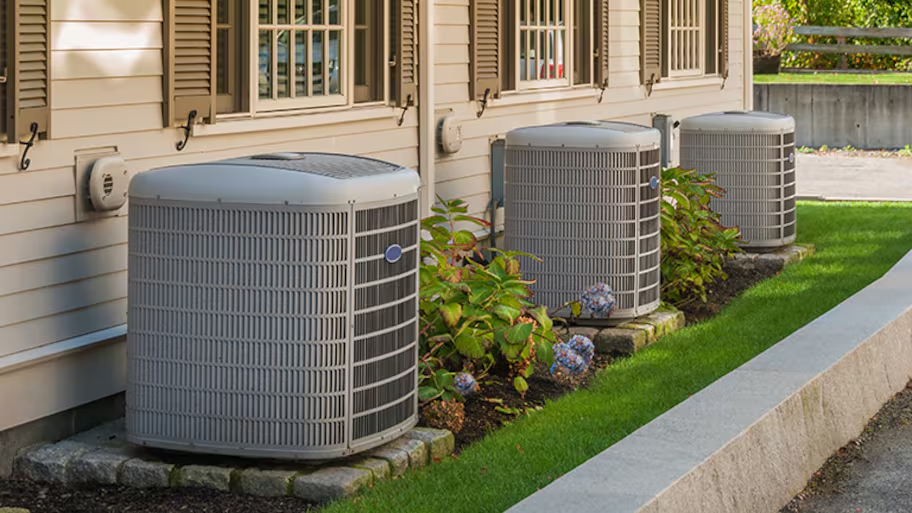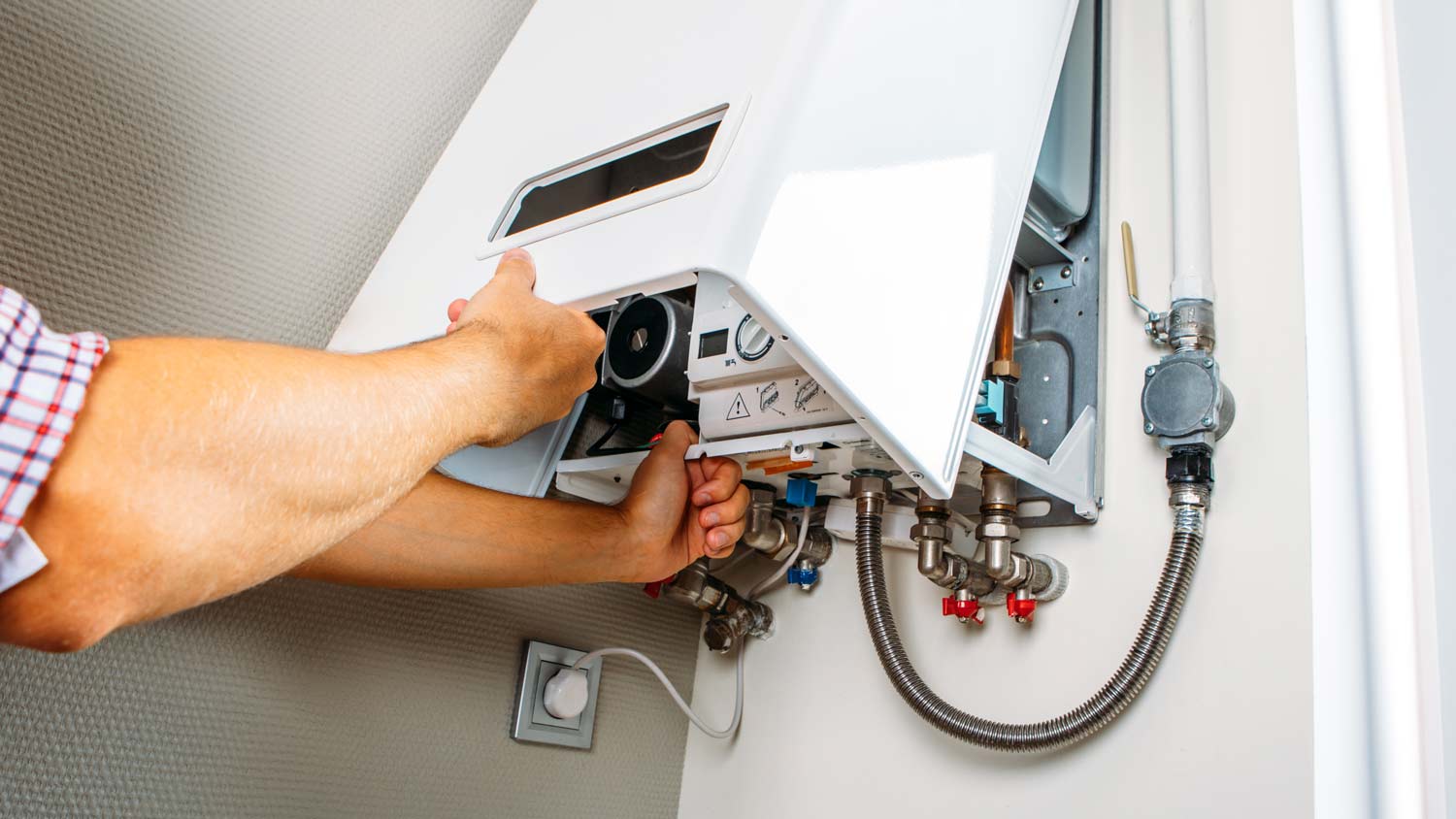
What you’ll pay in Columbus, OH, for furnace repairs depends on many factors. Here’s a breakdown of what can go wrong and the cost to fix those issues.
A breeze to install if you can read the room


A window AC might not be powerful enough to get you through a scorching summer. Ductless AC units are a versatile option perfect for cooling rooms where traditional ductwork can't easily go, like finished attics. While you need a professional to install most types of ductless systems, DIY units can make this a weekend project if you’re handy. We’ll walk you through how to install a ductless AC unit.
Ductless AC units are mini-split systems that only have cooling functions. While they aren't as complex and finicky as traditional ductwork, they're also not as simple as window ACs. Most mini-split systems require professional installation because they involve handling refrigerant. Depending on where you live, only licensed HVAC professionals can do that. But if you're up for a challenge, the ductless AC you need is a DIY mini-split unit.
DIY mini-splits come with "precharged" nitrogen and connectors, so you don't need a license to install one. If you’re handy, installation won’t be very daunting. However, you will likely need a licensed electrician to power it on.
Next, you need to choose the right size that’s measured in BTU (British Thermal Unit). You have more leeway to "guesstimate" a good size for a window unit, especially if you're cooling just one room. With DIY mini-split systems, you need very precise square footage calculations to find your AC tonnage and heat loss measurement. If the unit doesn't have enough BTUs, you'll be sweltering. But if the unit is too big for the area, it will repeatedly cycle on and off as if it's running a cheese grater on its condenser. Measure the room, or zone, where you want to install the unit. A good rule of thumb is 20 BTU per 1 square foot, so a 600-square-foot condo would need a 12,000-BTU mini-split system.
The wall for your mounting bracket needs to be on your home’s exterior, opposite of the AC unit. It should be far from doorways, direct sunlight, other heat sources, and areas that constantly generate dust (like near upholstered furniture).
This wall needs to be large and blank enough to house the air handler (also called an evaporator), which should be installed at least six feet above the floor with enough space between the air handler and the ceiling for the unit to fit. This part of the wall also shouldn't have wires, ducts, or pipes underneath it. A stud finder can help with this, along with locating the studs.
The exterior side should also have any obstructions removed, like bushes and patio furniture. Take note of trim and anything else that might need removal for boring the line hole.

After using a stud finder to sort out which wall doesn't have any obstructions, find and mark the stud locations.
If possible, you should mount the bracket directly on the studs to ensure a strong hold. To make sure you're on the right track, look at the mounting hole locations on the bracket. They should line up with standard stud layouts so that the holes will avoid hitting the studs.
Using the screws that came with your mounting bracket or your connector screws, fasten the mounting bracket to the studs.
Use a torpedo level to make sure that the bracket isn't crooked. The bubble should be dead center in the level’s tube vial and not slipping to the left or right.
It might not matter to you if a painting isn't level after hanging it, but you can't take that chance with a wall-mounted AC unit. If the air handler sits at a slope, it won't drain correctly. Once you get the mounting bracket perfectly level, use a pencil to mark the mounting holes.
Take a look at the screws that came with the unit or your own connector screws. Using a drill bit slightly smaller than those screws, drill pilot holes into the wall. If you don't hit the studs, hollow drywall anchors can help secure the bracket. Check how much your unit weighs to make sure you're using the correct size drywall anchors that can support it.

The pilot holes were a dress rehearsal for the real thing: drilling the large line set hole for the drain tubing plus refrigerant and control lines.
Check the lower corners of the mounting bracket. This is where the hole is usually located. The manufacturer might choose this or let you decide which side is more convenient for the lines to exit. A 2- or 3-inch hole needs to be bored from the interior to the exterior of your house.
Using the hole saw's pilot bit, drill long enough to reach the exterior. While the bracket needs to be horizontally level, your line set pilot hole has to slope downward slightly so it can drain outside with ease. Swap the hole saw's pilot bit for the regular hole saw bit and bore the line set hole at a slight angle.
The line set containing the control wire, drain line, and refrigerant pipe will be coiled up in the back of your air handler, and it needs to be carefully straightened out. Having someone help you outside will make this step go faster because you need to push the line set through the hole so it reaches the condenser (the outdoor unit).
The lines might be separated or held together in casing with a collar. If there's no collar, use electrical tape to keep the line set together. A plastic line set cover kit can also protect these tubes from the elements if your unit doesn’t come with a casing. Depending on the model, you also might need to connect the control wire to your air handler first by opening a panel in the back.
Place the taped line set near the spot where you'd like to put the condenser. Gently bend the lines, but don't stretch them like bungee cords.

Head back inside and check if any insulation was disturbed while you were in the wall. This is the time to replace it before snapping the air handler onto the mounting bracket.
Follow the manufacturer’s instructions to install the air handler. Push more of the line set outside if the air handler isn't popping onto the bracket. Secure it with the hardware provided by the manufacturer.
There are multiple options for mounting the condenser: You can place it on the ground, the outside wall, or even the roof.
If mounting on the wall outside, you need outdoor mounting hardware that can support a condenser that size. Most condensers don’t come with this hardware, so you need to measure it then purchase separately. If you're placing it on the ground, it needs to be mounted on a concrete pad. You can mix your own concrete or get a premade concrete pad from your local hardware store.
Regardless of where you mount the condenser, the line set needs to easily reach it. Avoid mounting it where other appliances vent to minimize obstructions.

Connect the pipes and refrigerant lines from the line set to the condenser. Carefully follow the manufacturer's directions, and do not cut any lines yourself. Refrigerant lines contain caustic fluid that can burn your skin off. You will need a professional if the lines need to be cut first.
If your model doesn't require cutting lines, you can use an adjustable wrench to connect the lines to the condenser. The torque wrench helps connect the multi-conductor wiring that runs through the indoor and outdoor units.
Even if you’re extremely confident in your work, consider having a local mini-split installer check that you handled your installation correctly. If any lines need to be cut, they have the licenses and tools to do so safely.
You’ll need a local electrician who can install another circuit for your ductless AC unit. Powering these units on isn’t like plugging a window AC into a normal outlet. They need their own 220-volt line connecting to the circuit breaker.
Installing a ductless AC unit is an advanced project that takes time, effort, and lots of care. For peace of mind, it may be worth it to have professionals handle it for you.
A DIY mini-split system costs around $700 to 1,000, but you're limited to single-zone models. The electrical work involved is another $500 to 1,000. It could tack on even more to call a local HVAC technician to assist with line cutting if your model requires it.
Conversely, a ductless AC system requiring professional installation costs about $1,500 to 4,000 before factoring in labor. You have more options, like multi-zone systems that cover larger areas, but labor costs are another $500 to 5,000 depending on the number of zones and how sophisticated the ductless system is.
From average costs to expert advice, get all the answers you need to get your job done.

What you’ll pay in Columbus, OH, for furnace repairs depends on many factors. Here’s a breakdown of what can go wrong and the cost to fix those issues.

HVAC replacement costs depend on a lot of factors, like unit type, size, and labor. See what you can expect to pay for HVAC replacement here.

Inspections are an essential part of furnace maintenance. Prevent inconvenient breakdowns by budgeting for furnace inspection costs and repairs.

If you need to repair a gas boiler or radiator heating system, you should first talk to a pro. Here are the top radiator repair questions you should ask.

A central humidifier can make dry winter air more comfortable indoors. Before your installation, discuss these whole-house humidifier questions with a pro.

A HEPA filter can help clear airborne particles that plague your home, such as dust and pollen, making the air cleaner and easier to breathe.